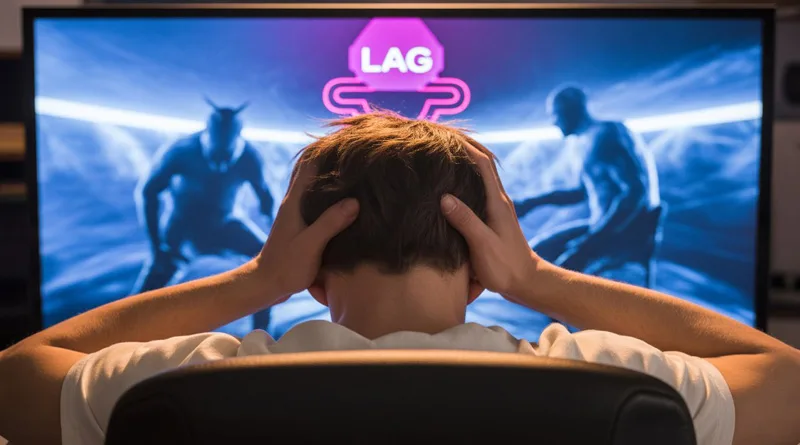Valorant is a game of razor-thin margins, where a single frame or a split-second of lag can determine the outcome of a round. So when technical issues get in the way—stuttering, low FPS, or overlay conflicts—it can be incredibly frustrating. If you’re tired of losing gunfights to performance problems, you’ve come to the right place. This is your ultimate valorant troubleshooting guide.
We have consolidated the solutions to the most common Valorant problems into one comprehensive resource. Instead of searching for ten different fixes, you can use this guide as your go-to checklist to solve your issues and get your game running smoothly.
This valorant troubleshooting guide will walk you through fixing everything from performance drops and lag spikes to the notoriously buggy Discord overlay, so you can spend less time frustrated and more time climbing the ranks.
Before You Begin: The Universal First Steps
Before diving into the specific fixes in this valorant troubleshooting guide, always perform these two steps. They solve a surprising number of problems.
- Restart Your Computer: It sounds simple, but a full system restart can clear out temporary files and background processes that might be bogging down your game.
- Update Your Graphics Drivers: Both NVIDIA and AMD frequently release new drivers optimized for popular games like Valorant. Ensuring your drivers are up-to-date is a critical first step.
How to Fix Lag, Low FPS, and Stuttering
This is the most common category of problems. Let’s start with the biggest and easiest fixes.
1. Optimize Your In-Game Settings for Performance
The single most effective way to boost your FPS is by adjusting Valorant’s own video settings. The goal is to prioritize performance and visibility over cinematic quality. This means turning down or disabling settings like Material Quality, Bloom, and Cast Shadows.
For a complete, setting-by-setting breakdown, we have a dedicated article that shows you the best Valorant settings for maximum performance. This is the first thing you should do.
2. Close Background Applications
Valorant is very sensitive to other programs running in the background, especially those that use a lot of CPU power or have their own overlays.
- Before launching Valorant, completely close unnecessary applications like Google Chrome, Spotify, Wallpaper Engine, and any other game launchers (Steam, Epic Games, etc.).
- Check your system tray (the small icons in the bottom-right of your screen) and close anything you don’t need.
3. Check for Overheating Components
If your performance is great for the first 10 minutes and then gets progressively worse, your PC is likely overheating. Dust buildup is the #1 cause.
- Solution: A thorough cleaning of your PC’s fans and heatsinks can dramatically improve performance. We have a complete, beginner-friendly guide on how to clean your PC safely.
How to Fix All Discord Overlay Issues
The Discord overlay is a fantastic tool, but it is notoriously problematic with Valorant. No valorant troubleshooting guide would be complete without a checklist to fix any issues you’re having.
1. Run Discord as an Administrator
This simple fix solves the problem for many users.
- Completely close Discord (right-click the icon in your system tray and click “Quit Discord”).
- Right-click on your Discord shortcut and select “Run as administrator.”
2. Enable the In-Game Overlay in Discord
You need to make sure the setting is turned on in two places.
- Go to User Settings -> Activity Settings -> Game Overlay. Make sure “Enable in-game overlay” is toggled ON.
- Next, go to User Settings -> Registered Games. If you don’t see Valorant, click “Add it!” and select the game. Make sure the little monitor icon next to it is enabled (has a red slash through it if disabled).
3. Disable Hardware Acceleration in Discord
This setting can sometimes conflict with Valorant’s graphics processes.
- Go to User Settings -> Advanced.
- Find “Hardware Acceleration” and toggle it OFF.
- Discord will restart, and this may solve your issue.
Beyond Technical Fixes: In-Game Awareness.
While high FPS is crucial, it’s useless without good game sense. A common technical issue for new players is not using their tactical map effectively to their advantage. Make sure you are constantly checking your map to track teammates, spot known enemy locations, and make better in-game decisions. Good awareness is just as important as a smooth-running game.
Beyond This Valorant Troubleshooting Guide: Fine-Tuning Your Setup
Once your game is running smoothly, you can focus on optimizing your personal settings for peak performance. A perfect crosshair and the right gear are just as important as high FPS.
- Perfect Your Crosshair: A clean, visible crosshair is essential. Our Ultimate Valorant Crosshair Guide not only explains the settings but also gives you pro player codes you can import instantly.
- Get the Right Gear: Your mouse, monitor, and keyboard are your connection to the game. For specific recommendations, check out our guide to the best gear for Valorant.
For truly deep-dive technical analysis of game performance, we highly recommend the data-driven videos from YouTube channels like Battle(non)sense.
By working through this valorant troubleshooting guide, you should be able to solve the vast majority of technical problems and get back to enjoying a smooth, responsive, and frustration-free gaming experience.

